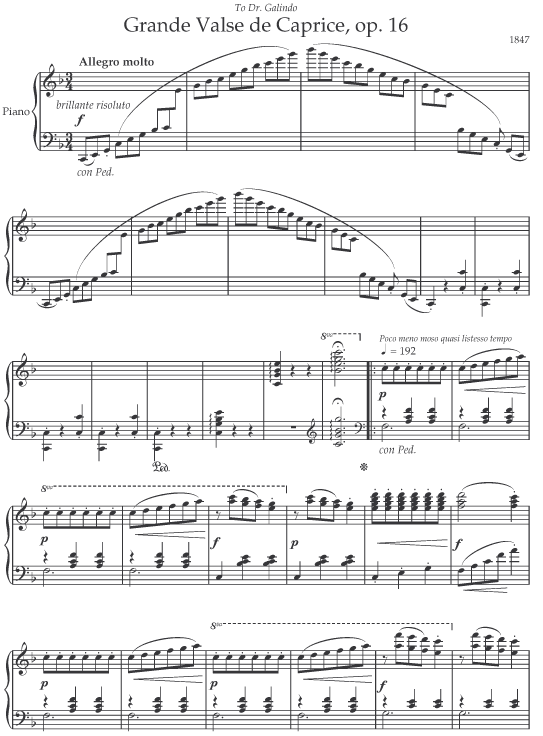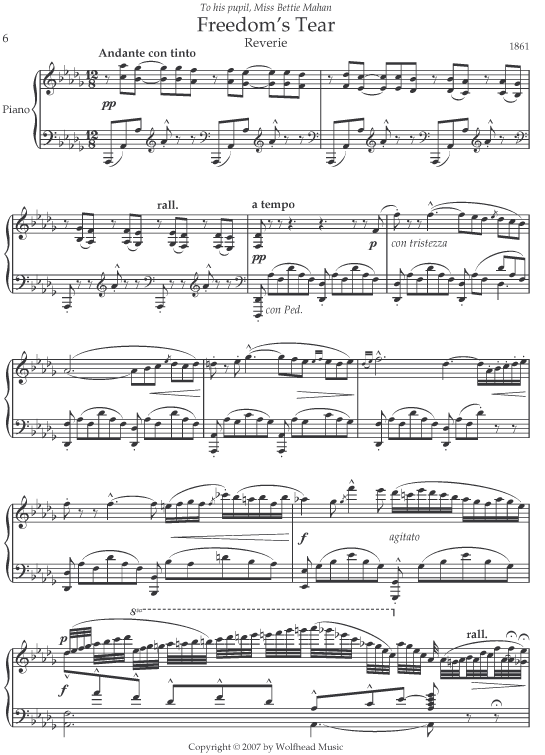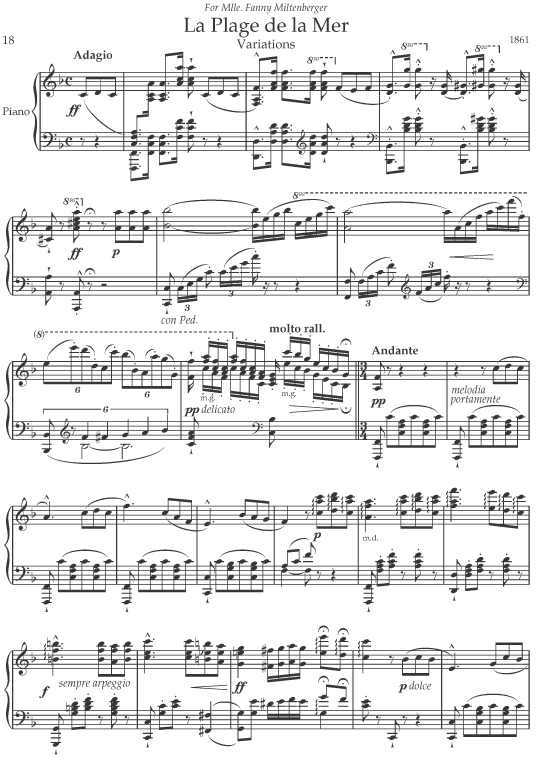
Theodore von La Hache

Piano Music of Theodore von La Hache. Born in Dresden in March 1822, Theodore von La Hache emigrated to the United States in 1842, settling in New Orleans where he made his permanent home. Little is known of his early life in Dresden, though he is known to have studied counterpoint under Karl Gottlieb Reissiger. In New Orleans La Hache quickly established himself as a prominent teacher and tutored a large number of students, many female, to whom he often dedicated his compositions. He later would become the chief organist and choirmaster of the Church of St. Theresa and would found the New Orleans Philharmonic Society and, after the War Between the States, the Harmonic Association of New Orleans. He was active as an organizer and conductor of concerts throughout the city and, in later life, co-owner of a piano store.
Many of La Hache's early works, mostly parlor music, were published by various monthly musical magazines. Though best remembered today for his setting of Abram Ryan’s poem “The Conquered Banner” for voice and piano, his compositions, numbering well in excess of 600 works, also include many sacred works for choir and orchestra which represent the pinnacle of his compositional achievements. His greatest — and lengthiest — work was the Missa Pro Pace of ten movements that was premiered in New Orleans, almost prophetically, only two days before Lee’s surrender at Appomattox.
The present collection consists of twelve of La Hache’s piano works, several of which are settings of airs that were well-known popularly at the time of composition. Unlike New Orleans native Louis Moreau Gottschalk, who made his career abroad and sided with the Union during the War Between the States, La Hache remained a loyal resident of his adopted city and was a staunch Confederate. Several of the pieces in the present collection were dedicated to units who were fighting for the Confederacy during the War, and all reflect his love of the South and of Southern culture.
The war years were particularly difficult for La Hache, as they were for nearly all Southerners at the time, though his inextinguishable optimism shows through in nearly all his works from the period. Forced to abandon public performance after contracting lead poisoning which resulted in palsy to his hands, he nevertheless remained active in the musical world of New Orleans until his death on 21 November 1869.
Contents Pages: 64 pp.; 8½” x 11”The Alabama
Confederates’ Polka March
Confederate Waltzes
Ever of Thee
Freedom’s Tear Reverie
Grande Valse de Caprice
Happy Contraband Scottisch
Improvisation on “My Southern Sunny Home”
Parade March and Quick Step
La Plage de la Mer
La Rosalia
United States Polka Quadrille
Level: Moderate to advanced
Performance Time: Various
Click on score to see larger image


